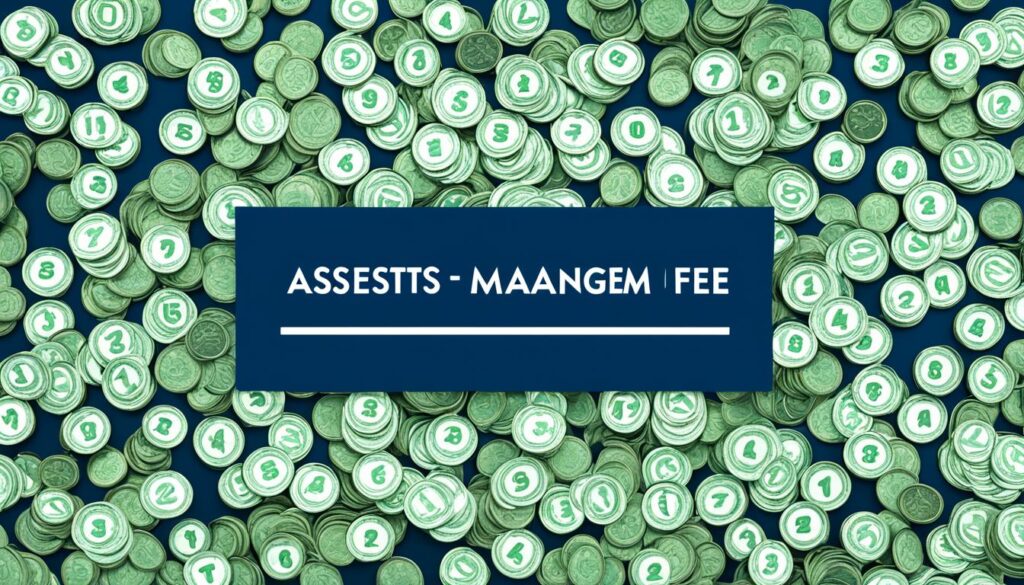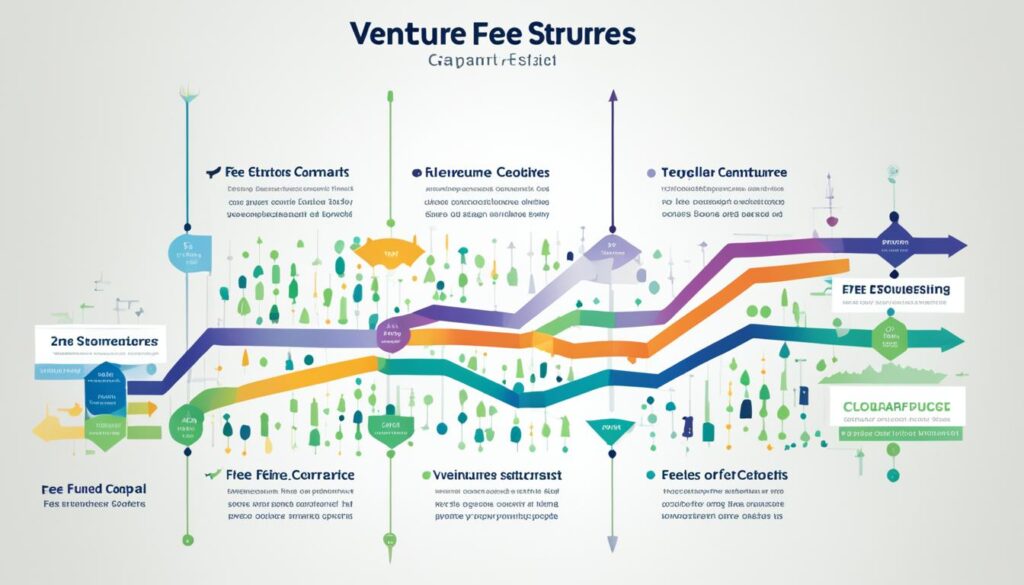In the fast-paced world of venture capital, a mysterious phrase has echoed through the industry for decades: “2 and 20.” But what exactly does this enigmatic term refer to, and why is it so crucial in understanding the financial mechanics of venture capital funds? Let’s dive in and uncover the secrets behind the “2 and 20” in venture capital.
Key Takeaways
- The “2 and 20” fee structure is a common model used in the venture capital industry.
- It refers to a 2% annual management fee charged by VC firms on the total assets under management (AUM).
- The “20” represents the 20% cut of the profits generated by the fund’s investments, known as the carried interest.
- This structure aligns the incentives of the fund managers and the investors by providing the managers a share of the upside when the fund performs well.
- Understanding the “2 and 20” model is crucial for navigating the complex world of venture capital investments.
Understanding the Venture Capital Fee Structure
The venture capital fee structure is a crucial component of the industry, defining how fund managers are compensated and aligning their incentives with those of their investors. At the heart of this fee structure is the well-known “2 and 20” model, which has become the industry standard for VC funds.
The Meaning of “2 and 20”
The “2” in the “2 and 20” fee structure refers to the annual 2% management fee charged on the total assets under management (AUM). This fee is used to cover the fund’s operating expenses, such as salaries, rent, and other administrative costs. The “20” represents the carried interest, which is the 20% share of the fund’s profits that the VC managers receive as a performance-based incentive. This carried interest aligns the interests of the fund managers with those of the investors, as the managers only earn their 20% cut if they generate strong returns for the fund.
The Industry Standard for VC Funds
The “2 and 20” fee structure has become the industry standard for venture capital funds. This model provides a balance between the need to cover the fund’s operating expenses and the desire to incentivize the managers to deliver exceptional returns. By charging a 2% management fee and offering a 20% carried interest, the VC firms can attract top talent while also ensuring that their interests are closely aligned with those of their investors.

The 2% Management Fee
The 2% management fee is an essential component of the venture capital fee structure. This annual charge is levied by VC firms on the total assets under management (AUM) of their funds. This fee serves a crucial purpose – it covers the fund’s operating expenses, such as salaries for the investment team, rent for office space, legal and compliance costs, and other administrative expenses.
The management fee is paid to the VC firm regardless of the fund’s performance, providing a stable source of income to cover the firm’s costs. The 2% figure is the industry standard, though some top-tier firms may charge slightly higher management fees due to their reputation and the high demand for their services.
Annual Charge on Assets Under Management
The 2% management fee is an annual charge that VC firms levy on the total assets under management (AUM) of their funds. This ensures that the firm’s income keeps pace with the growth of the fund, allowing them to maintain their operational capabilities as the portfolio expands.
Covering Operating Expenses and Salaries
The management fee is essential for VC firms to cover their day-to-day operating expenses and provide competitive compensation for their investment teams. These costs include everything from rent and utilities to legal fees, compliance obligations, and the salaries of the fund managers and supporting staff.

| Expense Category | Percentage of Management Fee |
|---|---|
| Salaries and Bonuses | 50% |
| Office Rent and Utilities | 15% |
| Legal and Compliance | 10% |
| Other Administrative Costs | 25% |
The 20% Carried Interest
The 20% carried interest, or “carry,” is the performance-based incentive fee that venture capital (VC) fund managers receive. This 20% cut of the fund’s profits serves as a profit-sharing incentive for the managers to generate strong returns for the investors. Once the investors have received their principal investment back plus a predetermined hurdle rate (often 8%), the remaining profits are split 80/20, with 80% going to the investors and 20% going to the fund managers as carry.
Profit-Sharing Incentive for Fund Managers
The carried interest aligns the interests of the managers and investors, as the managers only earn their 20% share if they are able to deliver outsized returns on the fund’s investments. This structure provides VC fund managers with a significant financial incentive to identify and invest in the most promising startups, actively monitor their performance, and work to maximize the fund’s profitability.
Calculation and Distribution of Carry
The calculation and distribution of the carried interest is a crucial aspect of the venture capital fee structure. The carry is typically calculated and paid out after the investors have received their initial investment back, plus any agreed-upon hurdle rate, often set at 8% or higher. Once this threshold is met, the remaining profits are split 80/20 between the investors and the fund managers, respectively. This “waterfall” approach ensures that the investors’ interests are prioritized before the managers can earn their performance-based compensation.

What is 2 and 20 in Venture Capital?
The “2 and 20” fee structure is the most common model used in the venture capital industry. It consists of a 2% annual management fee charged on the total assets under management (AUM) and a 20% carried interest, or performance-based incentive fee, paid to the fund managers. The management fee covers the fund’s operating expenses, while the carried interest aligns the incentives of the managers and investors by giving the managers a share of the fund’s profits.
The Typical Fee Structure Explained
For example, if a VC fund has $100 million in AUM, the 2% management fee would amount to $2 million per year. If the fund generates $50 million in profits, the investors would receive $40 million (80% of the profits), while the fund managers would receive $10 million (20% carried interest).
Examples and Calculations
The “2 and 20” fee structure is designed to align the interests of the venture capital fund managers and the investors. The 2% management fee provides a stable source of income for the fund managers, while the 20% carried interest gives them a significant incentive to generate strong returns for the investors. This model has become the industry standard, though some variations may exist among different VC firms.

Variations in VC Fee Structures
While the “2 and 20” model is the industry standard, there can be variations in venture capital fee structures. Some top-tier, established VC firms with strong track records may charge higher management fees, such as 2.5% or even 3%, due to their reputation and the high demand for their services. Smaller or newer VC funds, on the other hand, may have different incentive structures, such as a higher management fee (e.g., 3%) in the early years to cover their operating costs, followed by a lower carry (e.g., 15%) to remain competitive. These variations reflect the different market positions and fund-raising capabilities of VC firms.
Higher Management Fees for Top-Tier Firms
Leading venture capital firms with proven track records and a reputation for consistent performance can often command higher management fees from their investors. These top-tier firms may charge 2.5% or even 3% on the total assets under management, reflecting the value their expertise and established networks bring to the table. Investors are often willing to pay these premium fees to gain access to the best deal flow and the potential for outsized returns.
Incentive Structures for Smaller Funds
Newer or smaller venture capital funds may need to adopt different incentive structures to remain competitive and attractive to investors. These funds may start with a higher management fee, such as 3%, in the early years to cover their operating expenses and build a track record. However, they may then offer a lower carried interest, around 15%, to provide investors with a more favorable profit-sharing arrangement. This approach helps smaller funds offset their higher initial costs and build a loyal investor base as they establish themselves in the market.

The Motivation Behind “2 and 20”
The “2 and 20” fee structure in venture capital is designed to align the interests of VC fund managers and investors. The 2% management fee provides a stable source of income for the fund managers, allowing them to cover their operating expenses and salaries. However, the real upside for the managers comes from the 20% carried interest, which acts as a performance-based incentive.
The managers only earn their 20% cut if they are able to generate strong returns for the investors, typically by identifying and investing in promising startups that deliver significant growth and profitability. This structure ensures that the managers are highly motivated to make sound investment decisions and actively work to maximize the fund’s performance.
By tying a significant portion of their compensation to the fund’s success, the “2 and 20” model creates a powerful incentive for VC managers to prioritize the interests of their investors. This motivation behind 2 and 20 in venture capital helps to ensure that the fund managers and investors are working towards the same goal of generating outsized returns.
Performance and Justification of Fees
The “2 and 20” fee structure in the venture capital industry has been the subject of much debate and scrutiny. Proponents argue that the fees are justified by the strong returns generated by top-performing venture capital funds, which can deliver annualized returns of 40% or more. This performance-based compensation model aligns the interests of the fund managers with those of the investors, as the managers only earn their carried interest if they are able to generate significant profits for the fund.
Evaluating VC Fund Returns
However, critics point out that the overall performance of the venture capital industry has lagged behind public equity markets in recent years. The average annualized return for hedge funds from 2009 to 2018 was 6.09%, significantly lower than the S&P 500’s 15.82% during the same period. This raises questions about whether the fees charged by VC firms are appropriate, given the industry’s mixed results.
Criticism and Challenges to the Fee Model
Some investors have also challenged the carried interest component of the “2 and 20” fee structure, arguing that it should be taxed as ordinary income rather than capital gains. This ongoing debate over the tax treatment of carried interest has put pressure on VC firms to justify the value they provide to investors and potentially adjust their fee structures accordingly.

Tax Implications of Carried Interest
The carried interest component of the “2 and 20” fee structure in venture capital has significant tax implications. Under current rules, the 20% performance fee earned by VC fund managers is treated as capital gains, which are taxed at a lower rate than ordinary income. This “carried interest” loophole has been the subject of political debate, with some lawmakers arguing that the performance fees should be taxed as ordinary income rather than capital gains.
Capital Gains Treatment for Performance Fees
The preferential capital gains treatment of carried interest has long been a point of contention for critics of the venture capital fee model. They argue that the performance fees earned by fund managers should be taxed as regular income, rather than enjoying the lower capital gains rate. This difference in tax treatment can result in substantial savings for VC fund managers, further widening the wealth gap between the managers and their investors.
Political Pressure for Tax Reform
There have been several attempts to close the carried interest loophole and subject the performance fees to higher ordinary income tax rates. However, these efforts have faced resistance from the VC and private equity industries, which argue that the carried interest structure is essential for aligning the interests of managers and investors. The political pressure for tax reform on carried interest remains an ongoing battle, with proponents of change seeking to ensure that the tax code is more equitable and reflective of the true nature of the performance fees earned by VC fund managers.

Trends and Changes in Fee Structures
The traditional “2 and 20” fee structure in venture capital has faced increasing scrutiny and pressure in recent years. Some investors have pushed for lower management fees, with the median falling to around 2.5% for larger funds. There is also growing interest in alternative fee arrangements, such as performance-based fees that only charge carried interest if a certain hurdle rate is met, or fee structures that decrease over time as a fund matures.
These changes reflect the desire of investors to align more closely with the interests of VC fund managers and to ensure that the fees charged are commensurate with the value and performance delivered. As the venture capital industry continues to evolve, the fee structure is likely to become more nuanced and tailored to the specific needs and expectations of both investors and fund managers.
| Fee Structure | Trends and Changes |
|---|---|
| Downward Pressure on Fees | Investors pushing for lower management fees, with median falling to around 2.5% for larger funds |
| Alternative Fee Arrangements | Performance-based fees, decreasing fee structures as funds mature, co-investment opportunities outside standard fees |
These developments in venture capital fee structures reflect the evolving landscape and the ongoing efforts to align the interests of fund managers and investors, ensuring that the fees charged are fair, transparent, and reflective of the value delivered.

Conclusion
The “2 and 20” fee structure is a defining characteristic of the venture capital industry, with the 2% management fee and 20% carried interest aligning the incentives of VC fund managers and investors. While this model has been the industry standard for decades, it has also faced increasing scrutiny and pressure for change. As the venture capital landscape evolves, we may see more variations and alternatives to the traditional “2 and 20” structure, with a focus on ensuring that the fees charged are fair, transparent, and reflective of the value delivered by VC fund managers.
Nonetheless, the “2 and 20” model remains a crucial component of the venture capital industry, shaping the way fund managers are compensated and the way they approach their investment strategies. Understanding the intricacies of this fee structure is essential for venture capital managers, investors, and startups to navigate the industry dynamics and align their interests while considering the pros and cons of this compensation model.
As the venture capital industry continues to evolve, we can expect to see further refinements and adaptations to the traditional “2 and 20” structure, as stakeholders seek to strike a balance between fair compensation and strong performance incentives. The conclusion of this discussion is that the “2 and 20” fee structure remains a central aspect of the venture capital landscape, and its continued relevance will depend on the industry’s ability to adapt and respond to the changing needs and expectations of both fund managers and investors.
